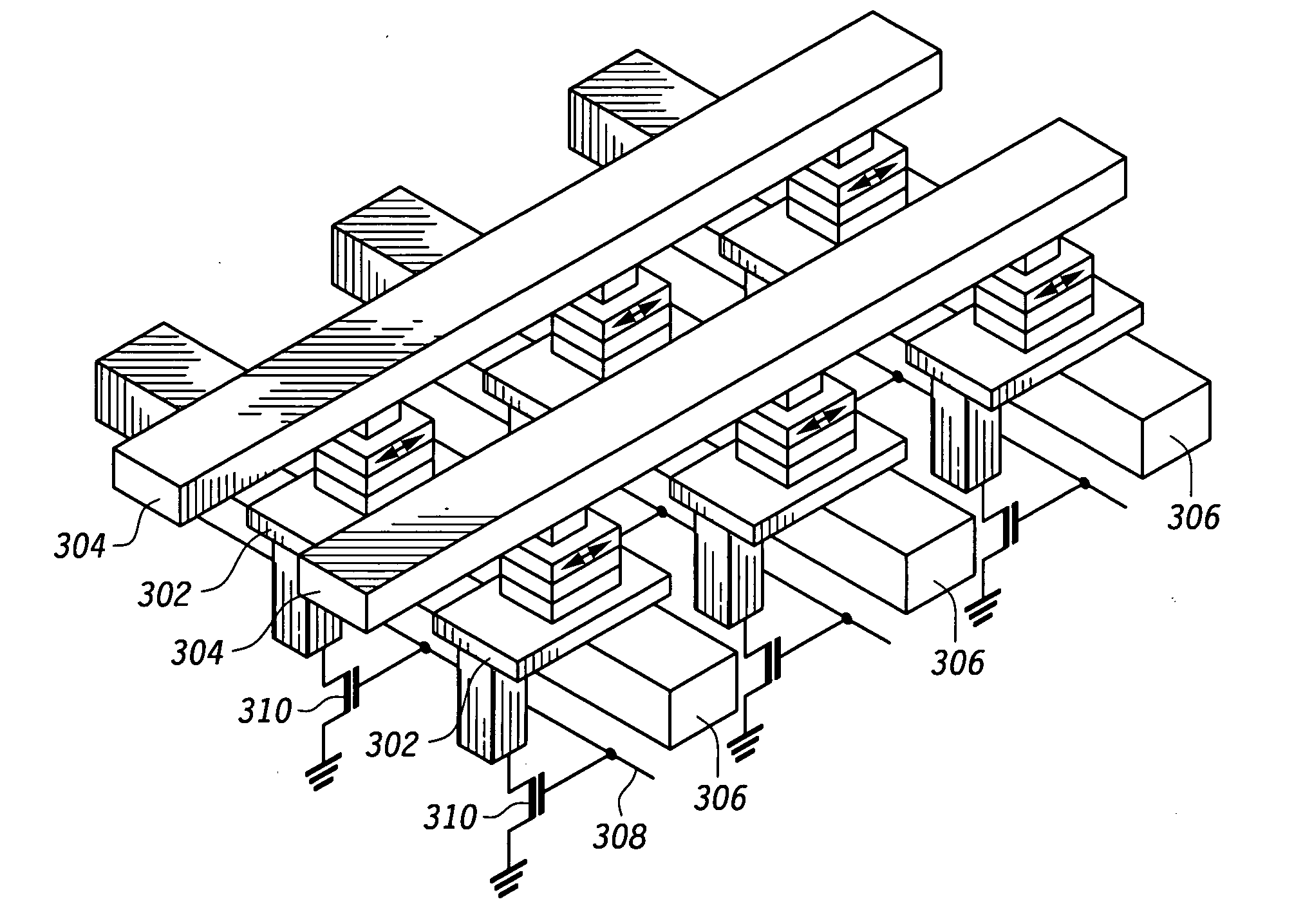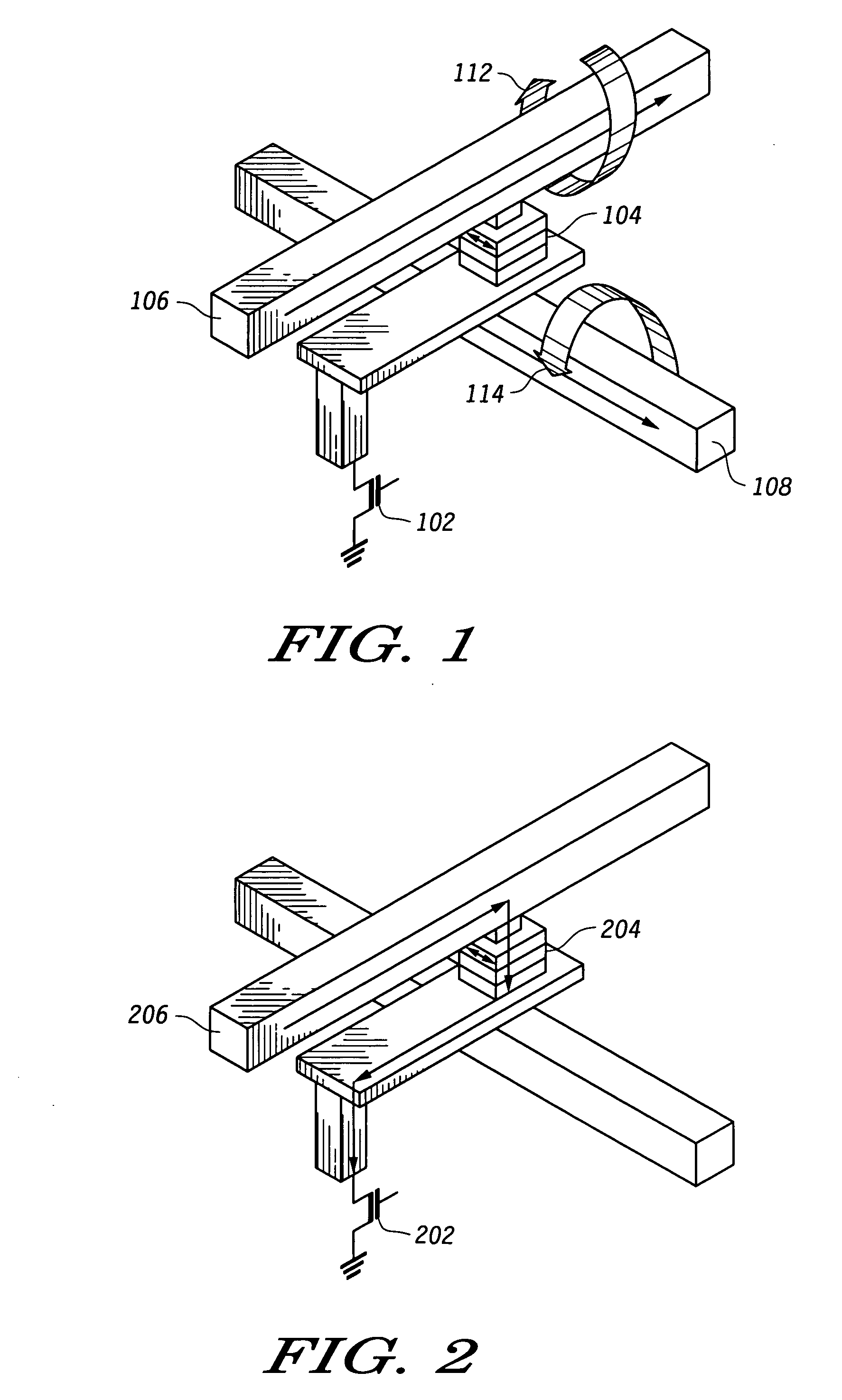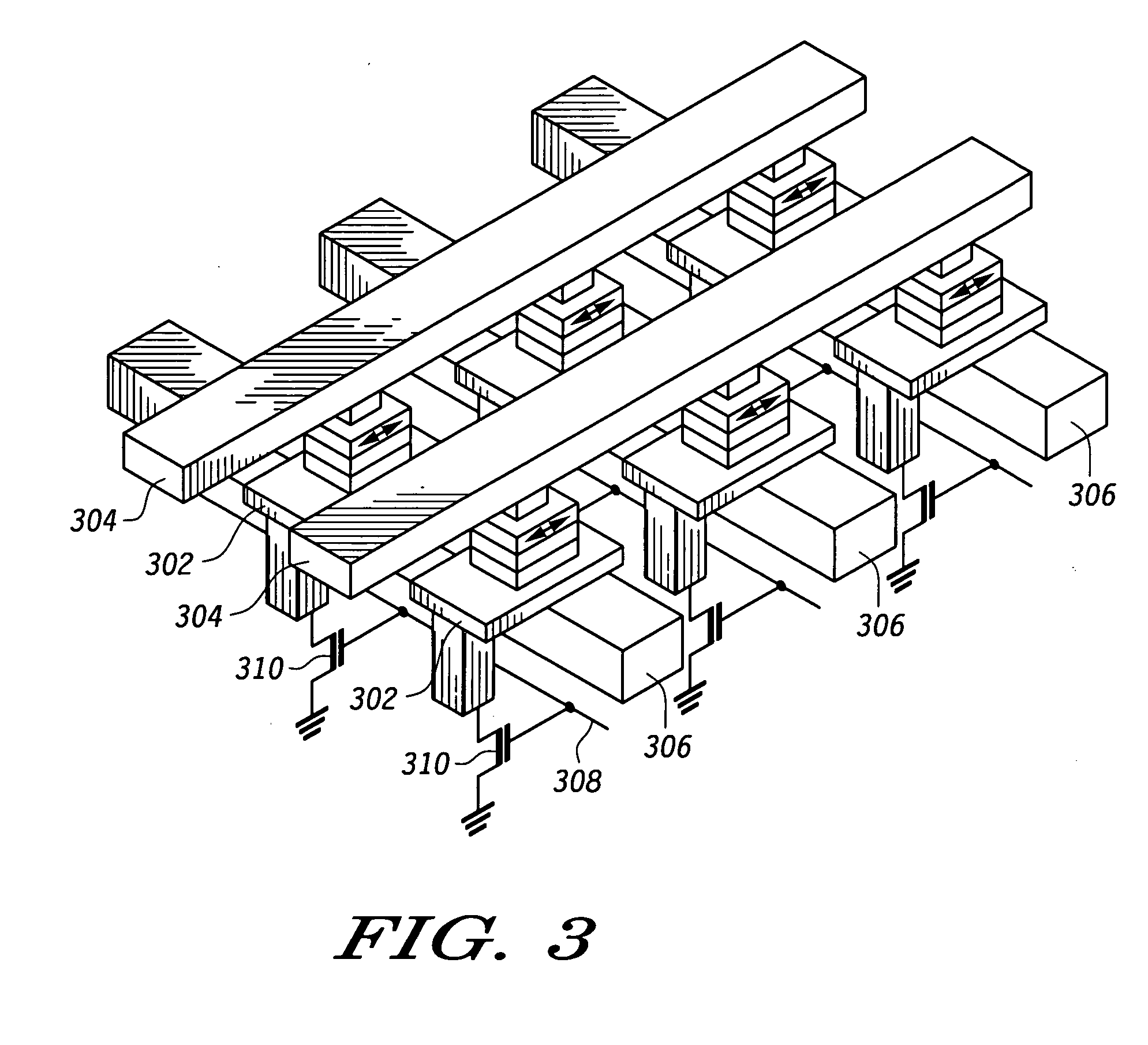Reducing power consumption during MRAM writes using multiple current levels
- Summary
- Abstract
- Description
- Claims
- Application Information
AI Technical Summary
Problems solved by technology
Method used
Image
Examples
Embodiment Construction
)
[0022] According to the present disclosure, a reduced power method of writing MRAM bits is disclosed. The reduced power method includes first attempting to write to the MRAM bits using a low magnitude magnetic field and determining if the bit has switched. If the write was not successful, a second, higher magnitude magnetic field is used to write the bit. Applying a magnetic field to an MRAM bits is accomplished by sending a current pulse through a strip line adjacent to the MRAM bits. Thus, lower current pulses can be used for a portion of MRAM bits in an array, saving power consumed.
[0023] Various embodiments are disclosed. In a first embodiment, the above method is performed for every write to an MRAM bit. In another embodiment, the weaker magnetic field is applied during system test or system initialization, and if the weaker field fails to meet an objective, such as to toggle the stored value, an indication of the failed objective is stored and each subsequent write to the MR...
PUM
 Login to View More
Login to View More Abstract
Description
Claims
Application Information
 Login to View More
Login to View More - R&D
- Intellectual Property
- Life Sciences
- Materials
- Tech Scout
- Unparalleled Data Quality
- Higher Quality Content
- 60% Fewer Hallucinations
Browse by: Latest US Patents, China's latest patents, Technical Efficacy Thesaurus, Application Domain, Technology Topic, Popular Technical Reports.
© 2025 PatSnap. All rights reserved.Legal|Privacy policy|Modern Slavery Act Transparency Statement|Sitemap|About US| Contact US: help@patsnap.com



